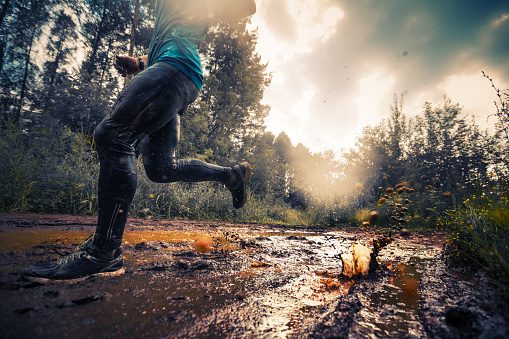Strength tips for trail running goals
Whatever your goal, these strength and training tips will get you stronger for trail running season

November darkness isn’t the best for running motivation. That’s why it’s the prefect time of year to work on weaknesses in order to mitigate injuries when trail running mileage increases. Trail runners need their muscles to work efficiently for a variety of terrain, speeds, and distances. Whether it be ascents, technical downhill, or overall endurance–sport and exercise scientist Alex Ackerley from Nexus Fit has tips for every goal.
RELATED: Must-do strength exercises for trail runners
Ackerley suggests that trail runners focus on strength work at least once a week during the race season. “In the off season, take advantage of that time be increasing two to three gym sessions per week. Focus on muscle building, strength building, and power development in that order for four to six weeks at a time.”
1. Focus: Technical, steep descents
Exercises that activate eccentric loading and lower limb stability can help trail runners on technical terrain. Ackerley recommends jumping lunges. Try five reps of each movement in sequence, followed by 60 seconds of rest. Start with four rounds, and build from there while decreasing the resting interval.
2. Focus: Steep uphills
Developing anaerobic power and strength will help you get stronger and faster going uphill on the trails. Ackerley recommends step-ups while holding heavy weights. Start with six reps on each leg, stepping up and onto a bench or box, holding a barbell or dumbbells.
When running, incorporate hill strides into an easy run to help build both strength and power. On your next easy run, try four to 10 20-to-30-second sprints on any hill you find. Make sure to bring your heartrate back down in between strides.
RELATED: Record breaking treadmill workouts
3. Focus: Overall endurance
If you want to improve your ability to go longer, Ackerley recommends developing aerobic threshold. “One way to do this is a 10-minute maximum effort measuring total output. For example, how far can you run in 10 minutes?” Ackerley tests his trail runners by using this max test to indicate intensity for effort on the trails.

Trail running can be unpredictable, but functional bodies can help us be successful when the weather becomes perfect for getting back on the trails. This winter, consider the type of terrain you want to improve on, and then strengthen the muscles to help you excel.


